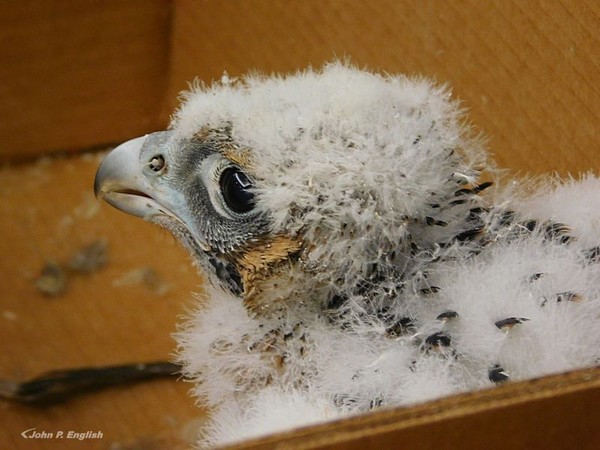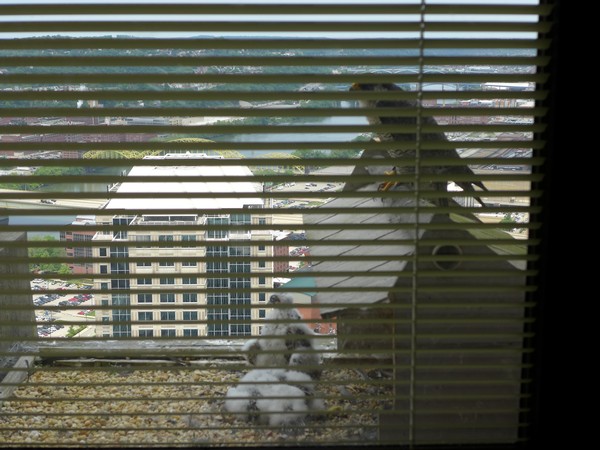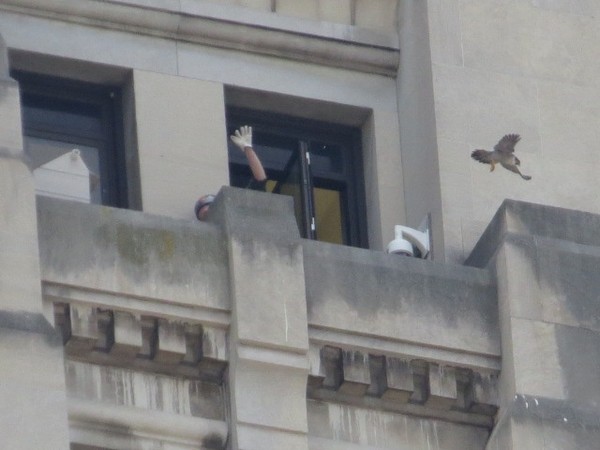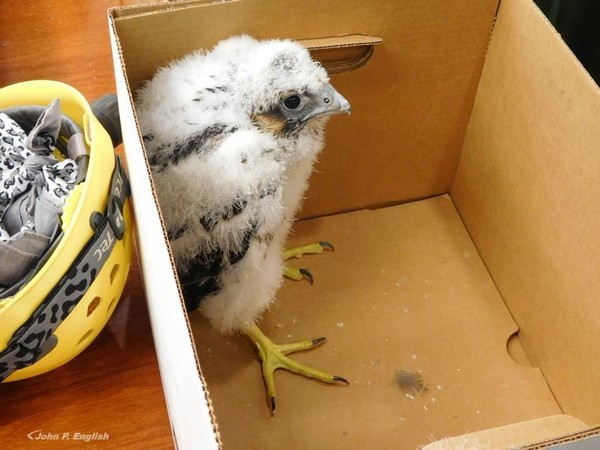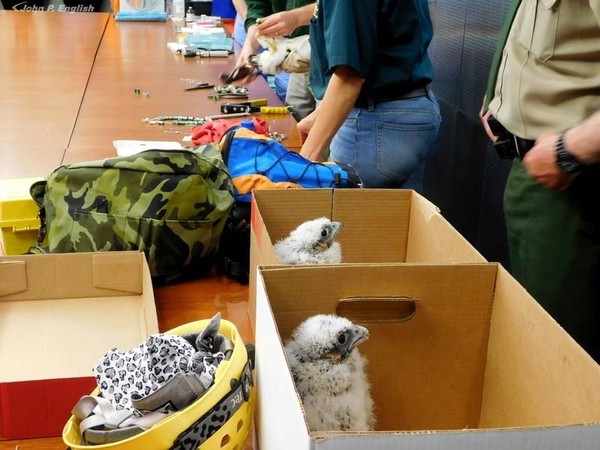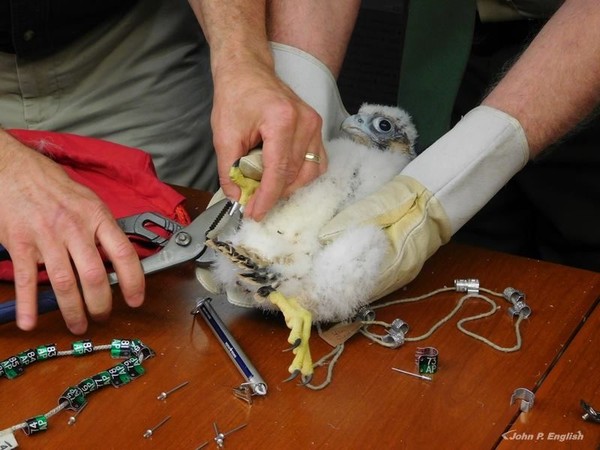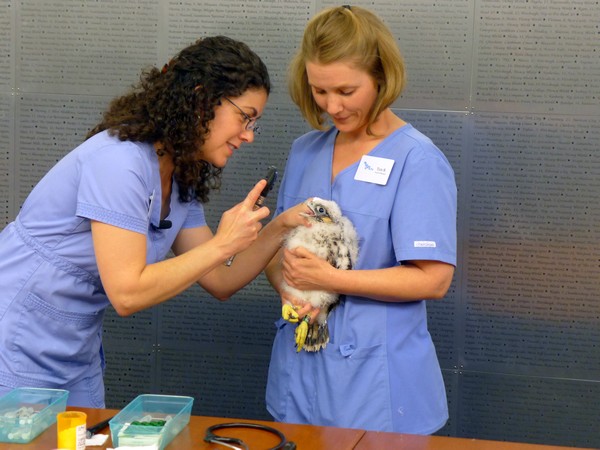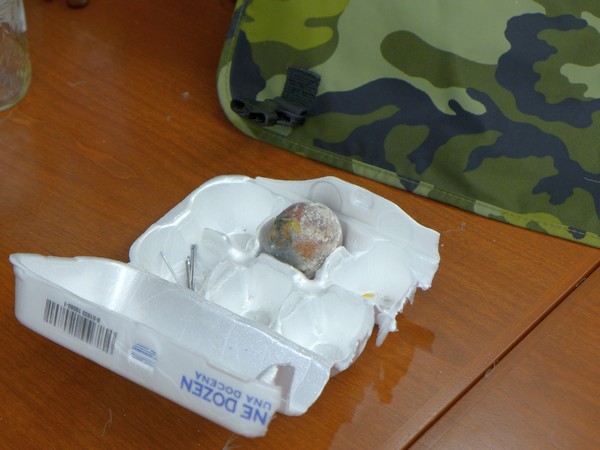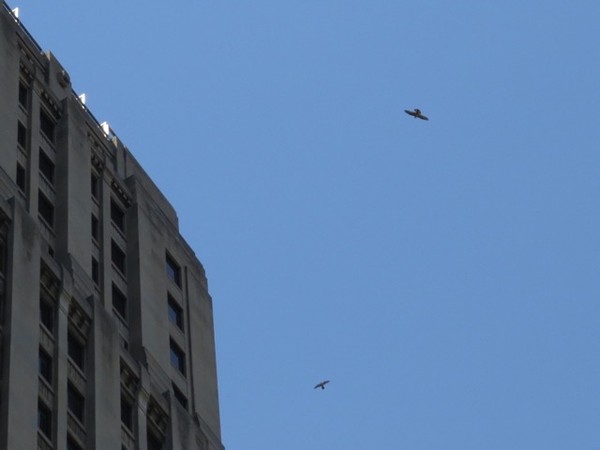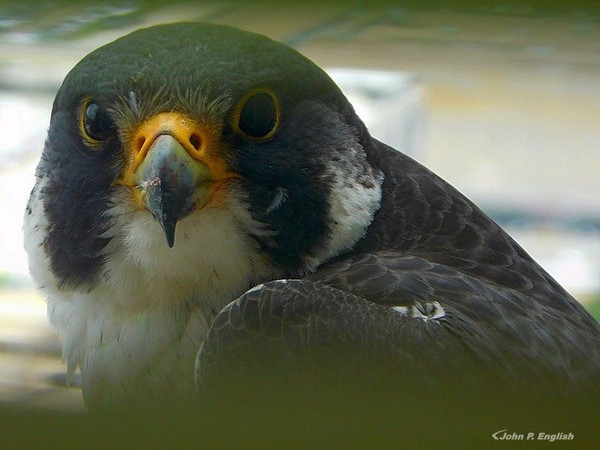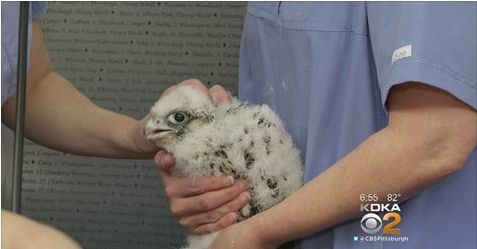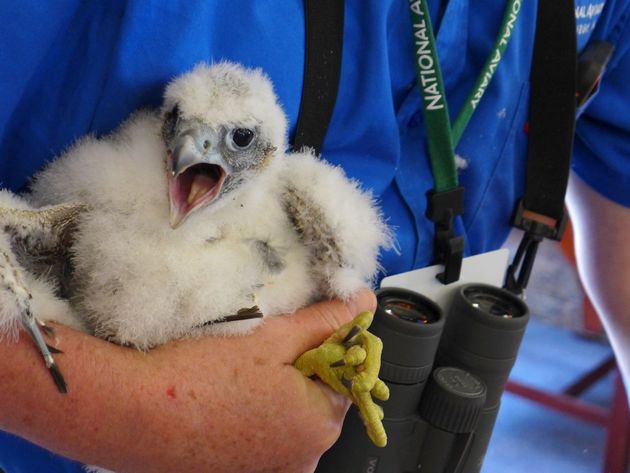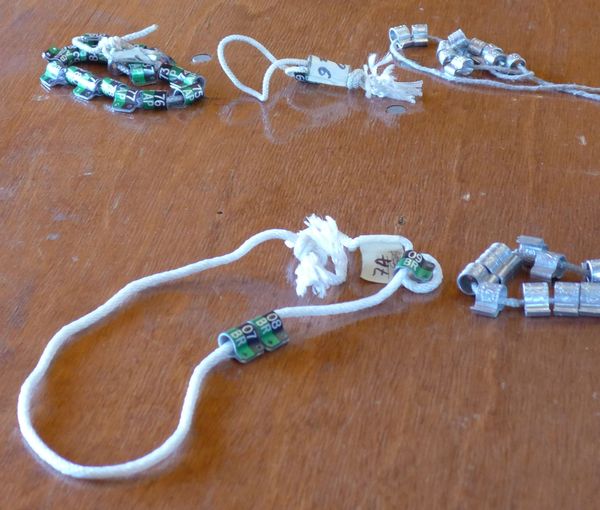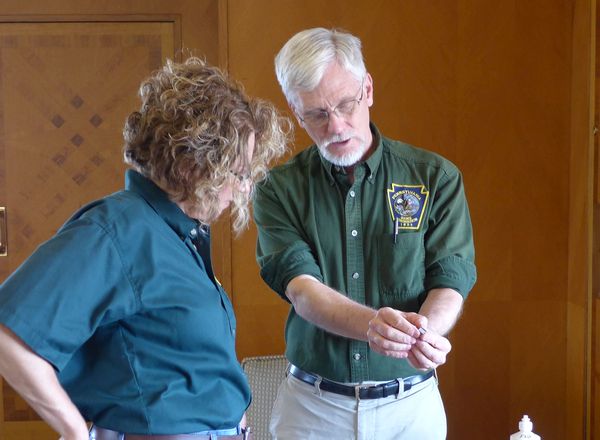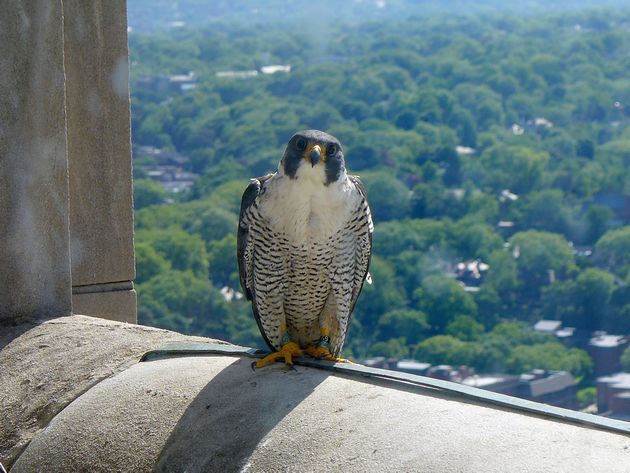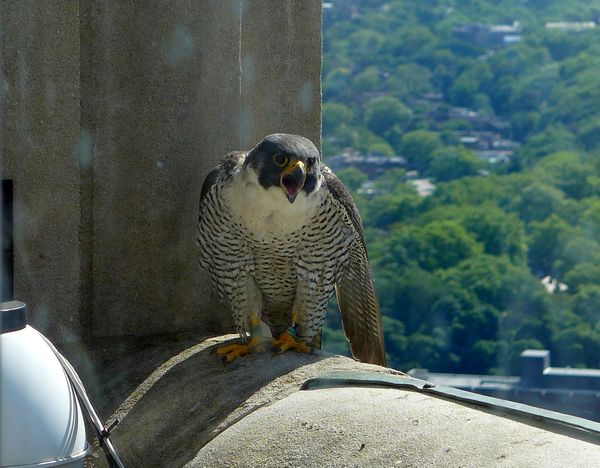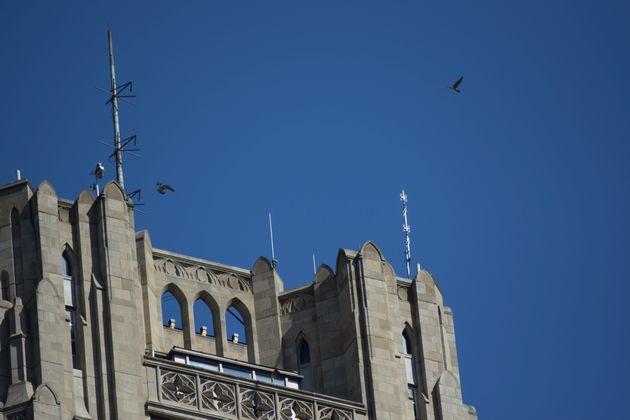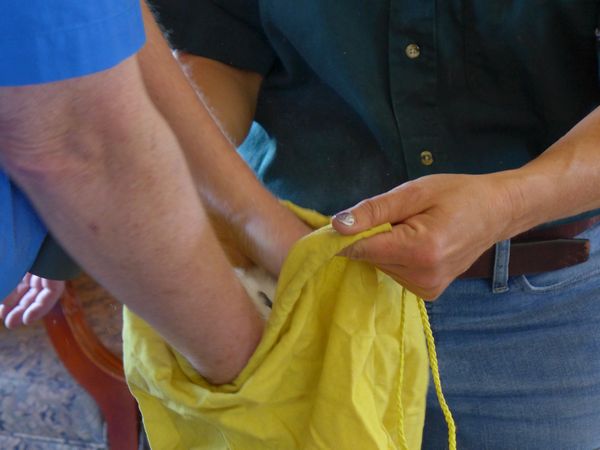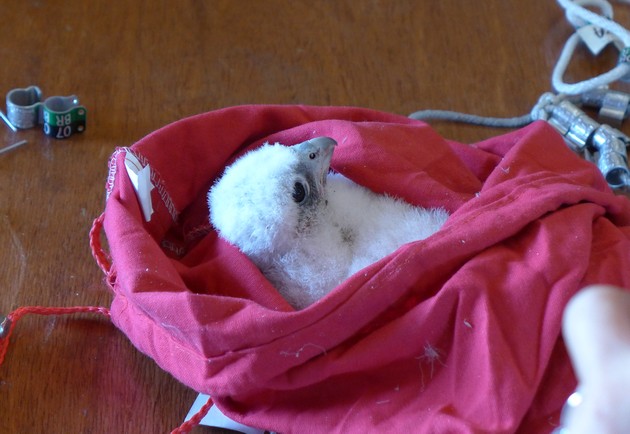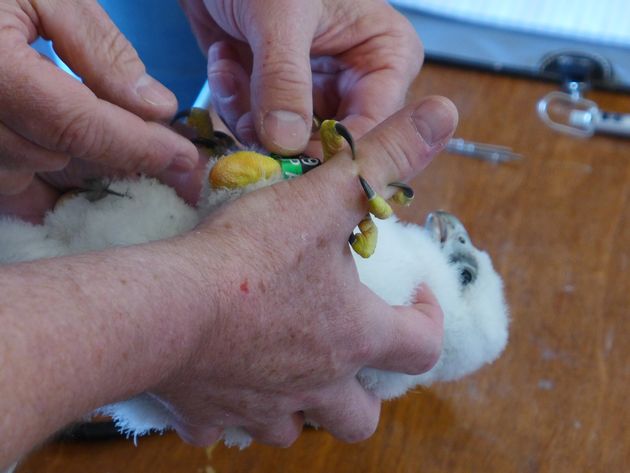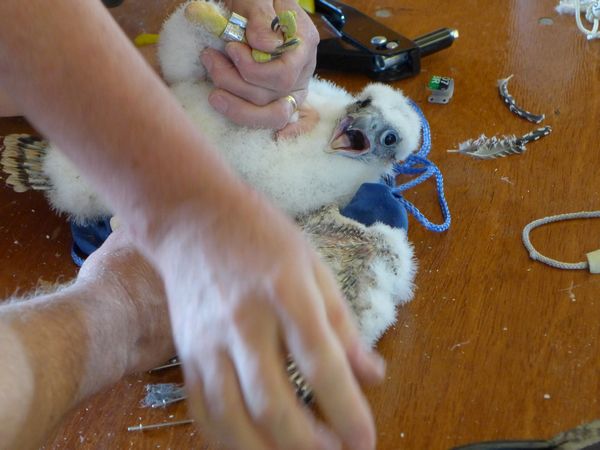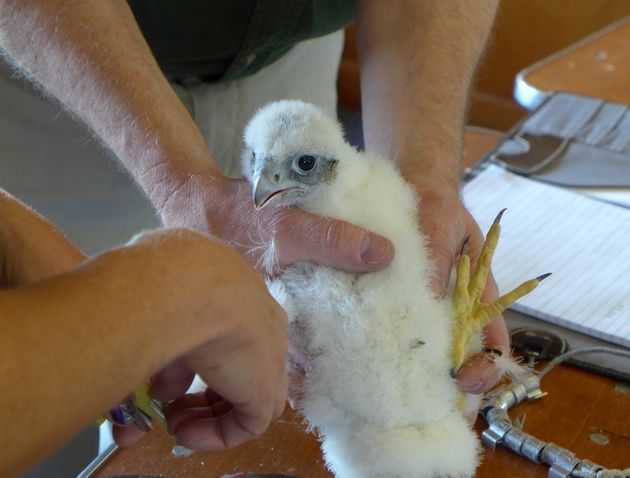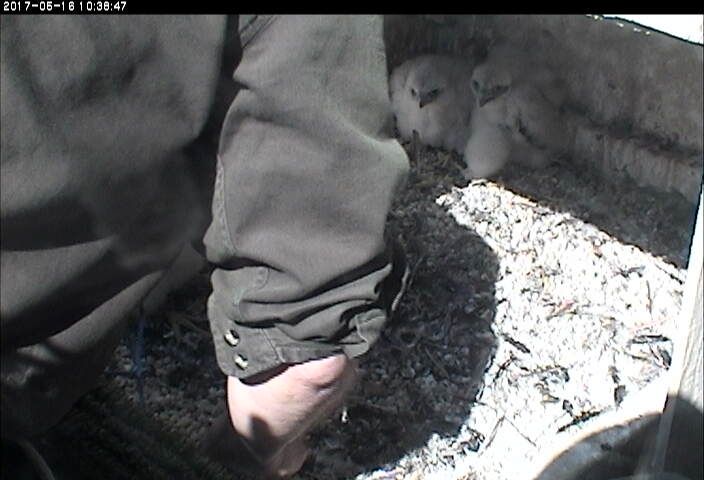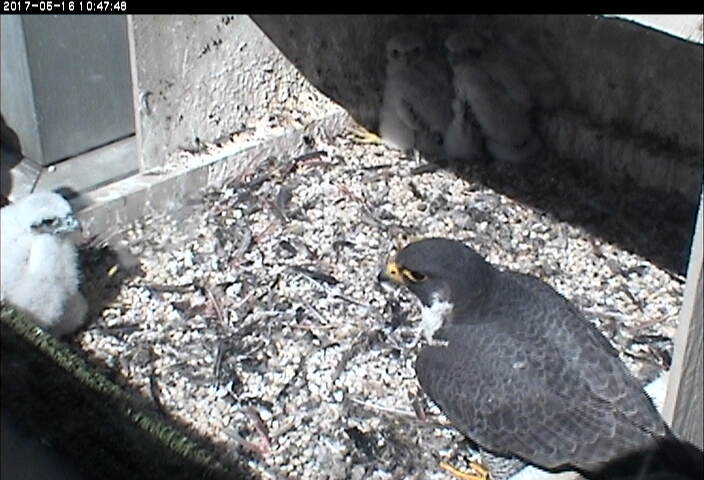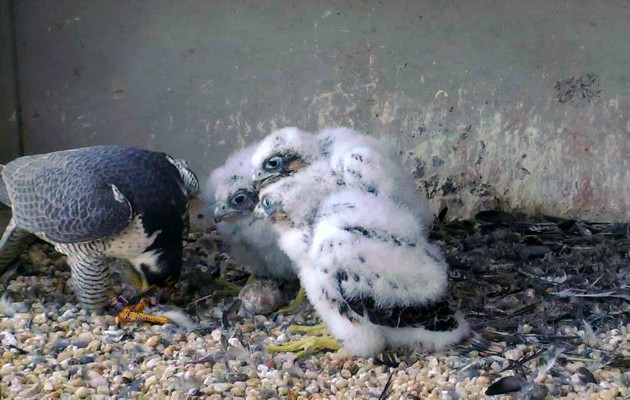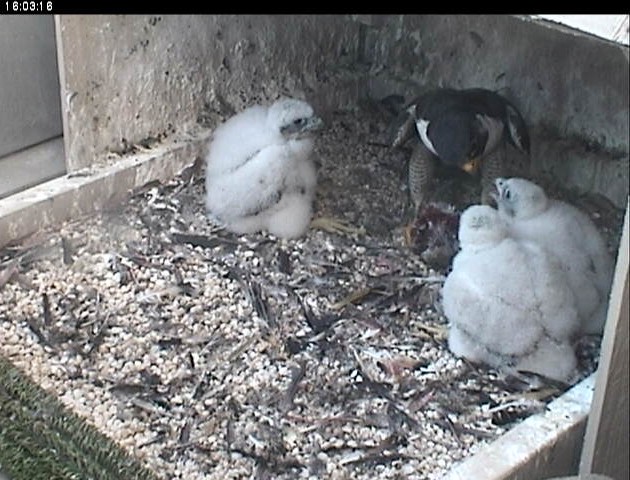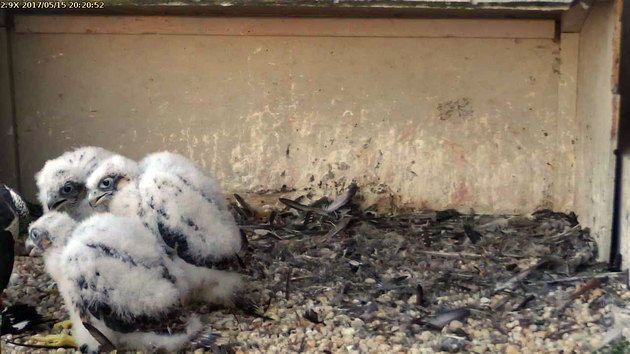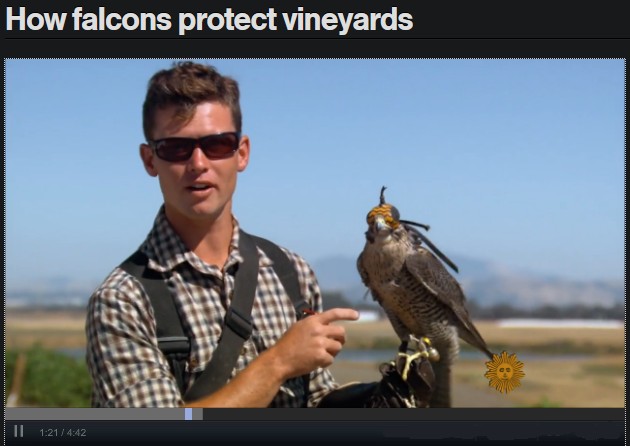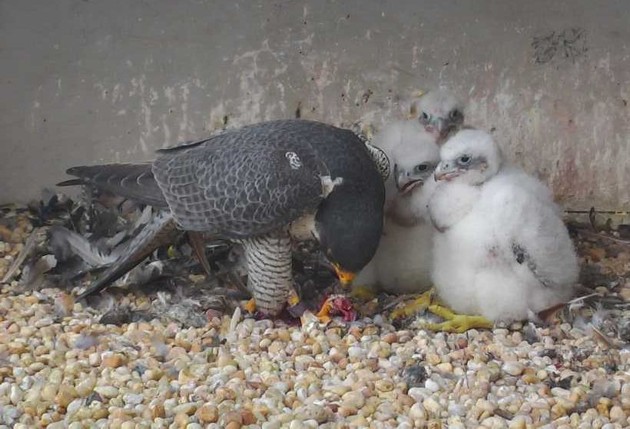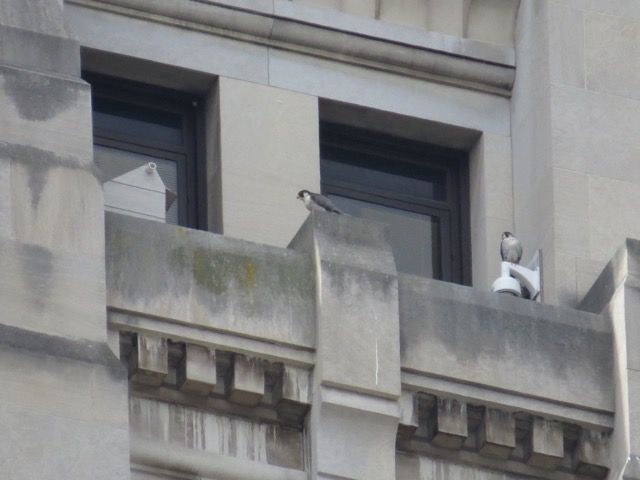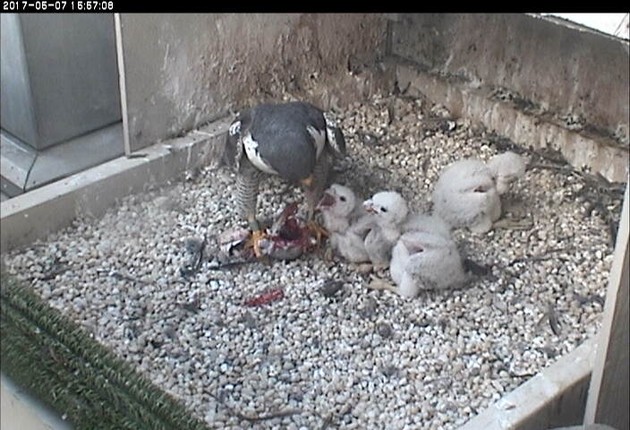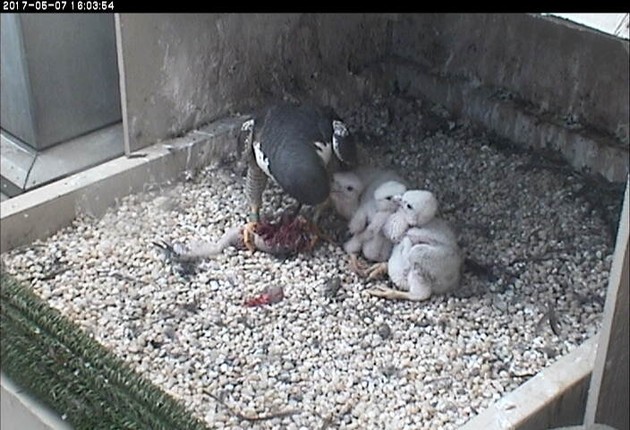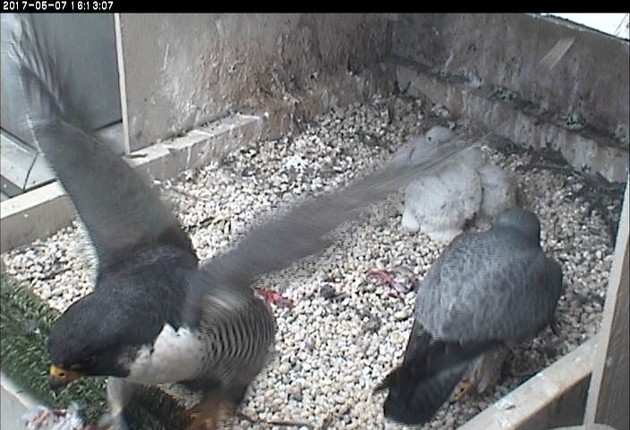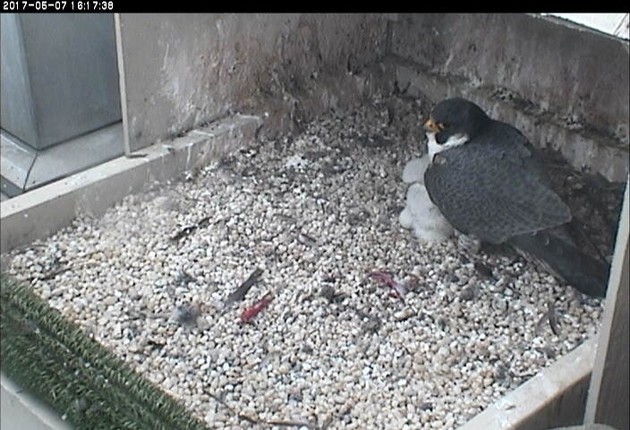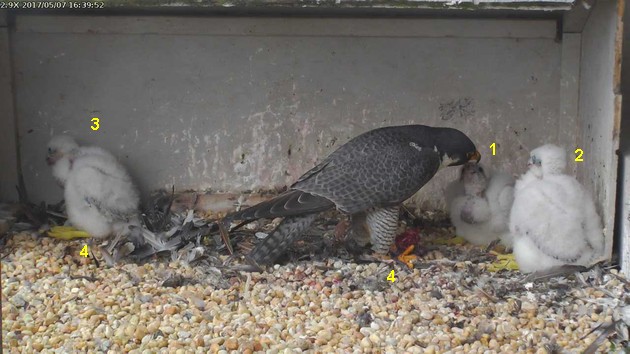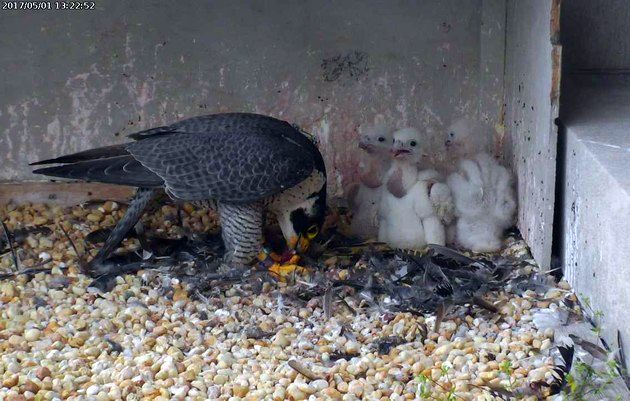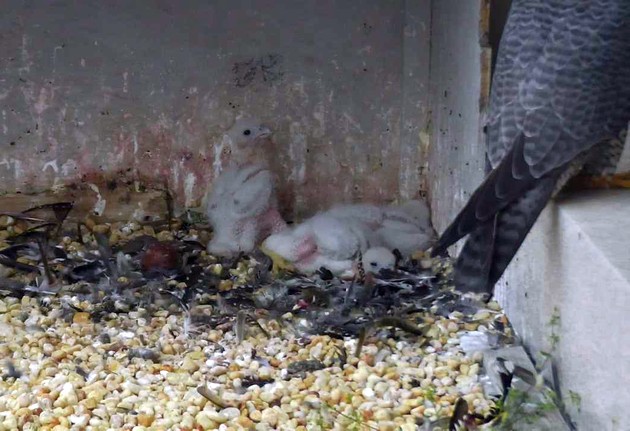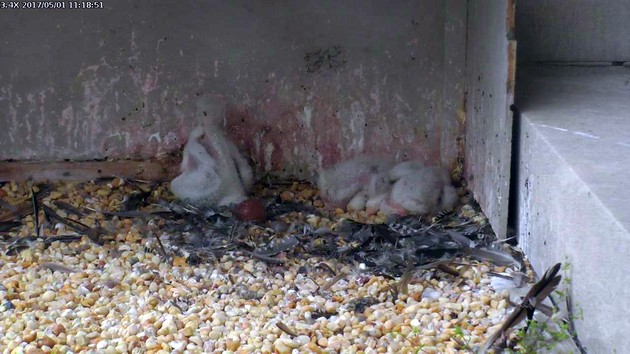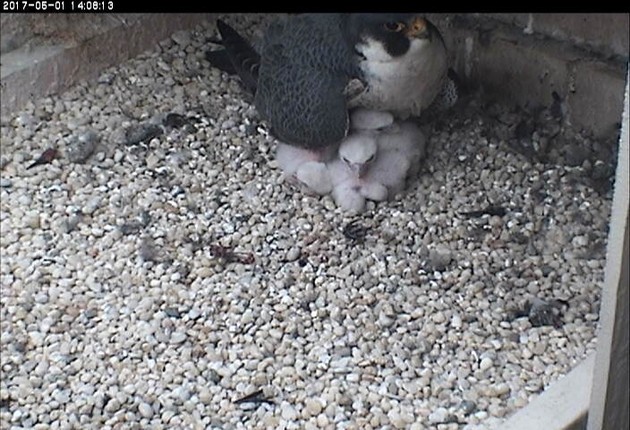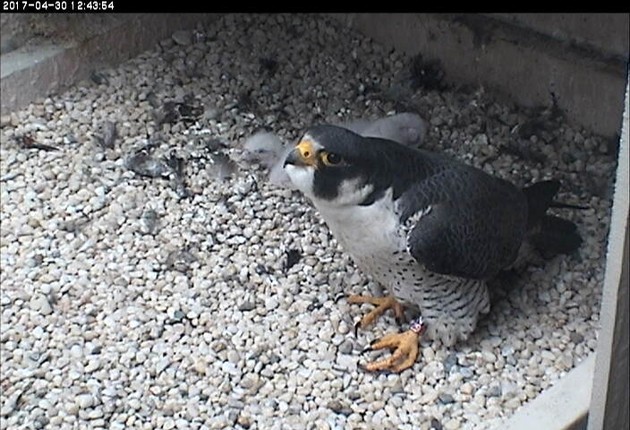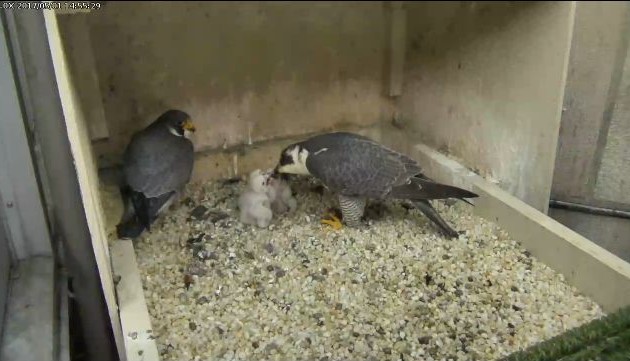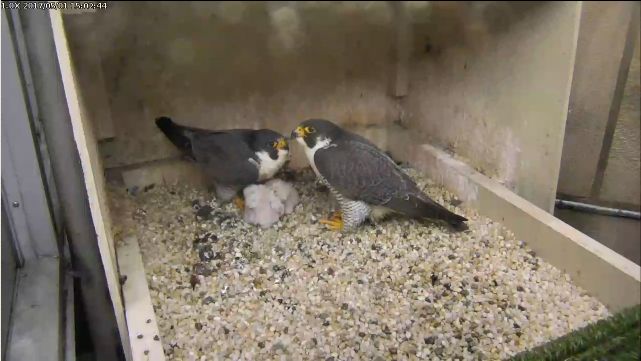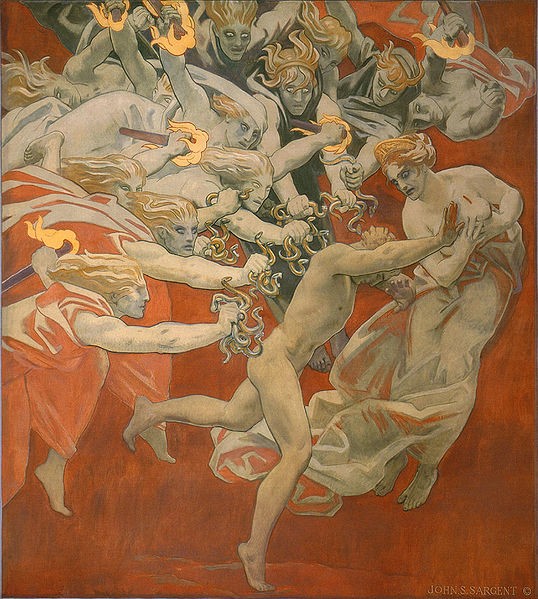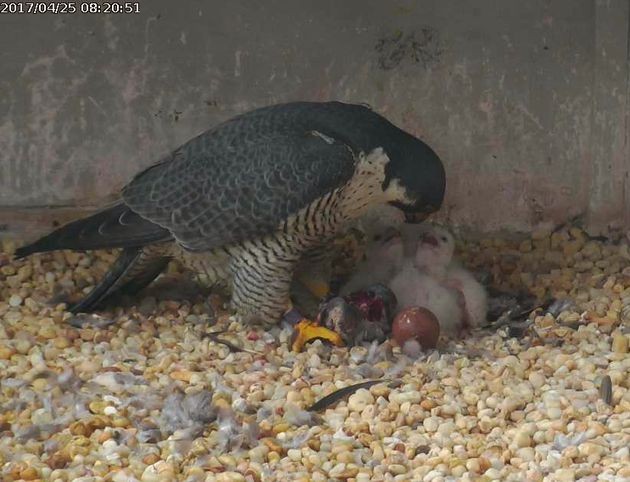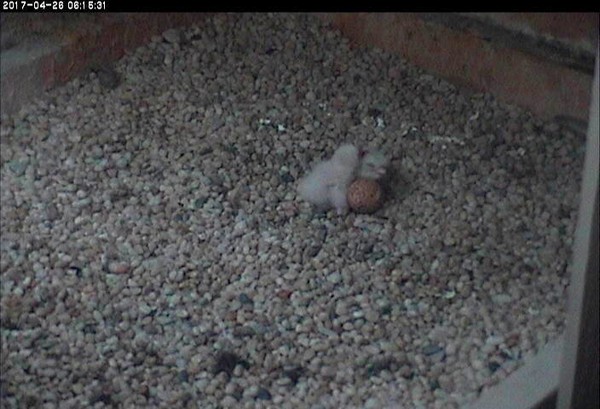
On Wednesday May 17, Dan Brauning and Tom Keller of the Pennsylvania Game Commission checked for peregrine nests at the McKees Rocks and Neville Island I-79 bridges.
McKees Rocks Bridge:
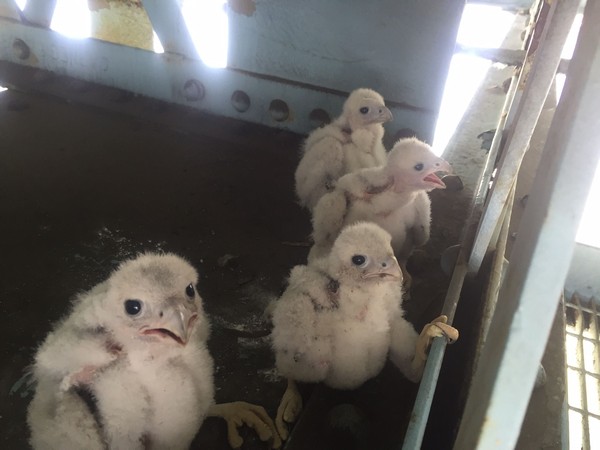
With PennDOT’s help and a bucket truck, Dan and Tom found four nestlings too young to band at the McKees Rocks Bridge. About 15 days old, they were so young that their sex could not be determined by weight. Their nest site didn’t have a place for the chicks to practice flapping before fledging so Dan and Tom relocated them to a safer location nearby. Their mother came close to defend them. Dan noticed that she’s unbanded.
Neville Island I-79 Bridge:

At the Neville Island I-79 Bridge, Dan, Tom and PennDOT staff walked the catwalk all the way to the Glenfield side before they found the nest. The nest was so far away that the five of us who came to observe the banding missed the entire show. All we saw was the adult male peregrine strafing the bridge in the distance.
Dan and Tom found and banded four chicks about 21 days old: three females and one male. The mother peregrine stayed near her chicks the whole time. Even in this small photo you can read her bands (black/red 62/H), confirming that she’s Magnum from Canton, Ohio in 2010. (*)
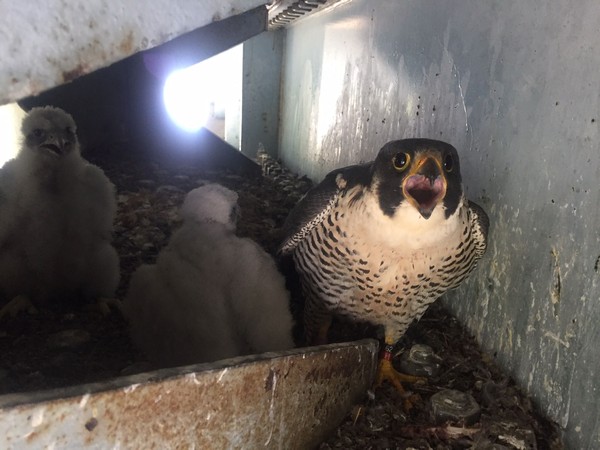
(bridge photos by Robert Strover via Wikimedia Commons. Peregrine photos by Tom Keller, PA Game Commission)
(*) p.s. Magnum has been at the Neville Island I-79 Bridge since 2013.
